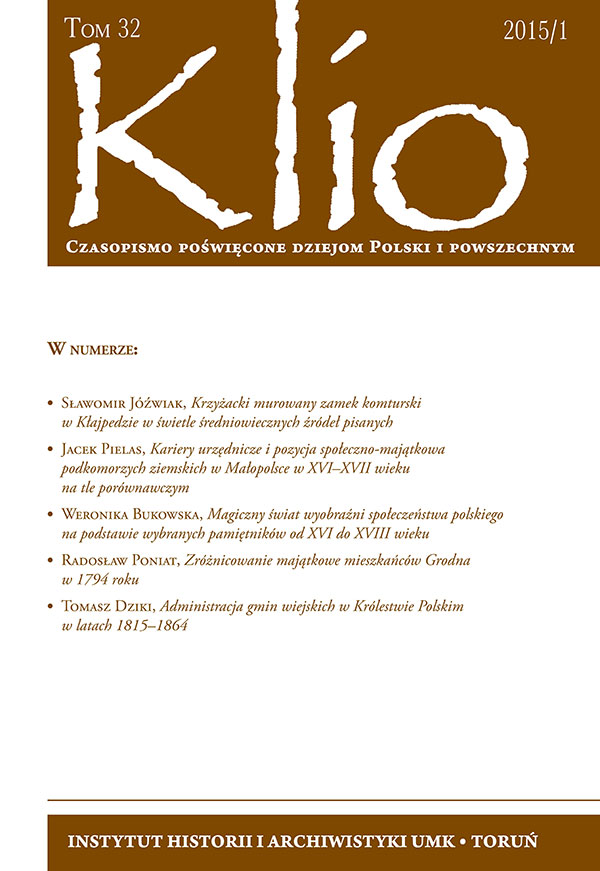Krzyżacki murowany zamek komturski w Kłajpedzie w świetle średniowiecznych źródeł pisanych
The Teutonic commander brick castle in Klaipeda in the light of medieval written sources
Author(s): Sławomir JóźwiakContributor(s): Ewa Kościałkowska-Okońska (Translator)
Subject(s): Architecture, Regional Geography, 13th to 14th Centuries
Published by: Wydawnictwo Naukowe Uniwersytetu Mikołaja Kopernika
Keywords: Middle Ages; Prussia; Teutonic Knights; the castle in Klaipeda (Memel);
Summary/Abstract: The analysis of written sources allows to claim that the first fortified settlement (constructed of wood and earth) was erected in Klaipeda (Memel in German, Klaipėda in Lithuanian) in 1253. In 1290, the square-rectangular stronghold was surrounded by a stone wall (it was confirmed in sources dating back to 1323). Unfortunately, the castle’s interior enclosure at that time is unknown. In sources dating back to the 13th and 14th centuries, published in Latin, a stronghold like this was called a “castrum”. The analysis of the sources, disregarded so far by researchers, demonstrated that a brick castle’s interior enclosure in Klaipeda (“Gemach” of the commander, bakery, church) had existed in the first decade of the 15th century. Most likely in 1408 the castle was thoroughly redeveloped (to take a quadrangular or rectangular shape), and this could be accomplished concurrently with the demolition of old buildings. Construction works accelerated in 1417, yet the entire interior enclosure (i.e., basements, the ground floor, first floor, attic) – that dates back to this time – can be confirmed only in two wings of the high castle. Probably the other two wings (surrounded by enclosure walls) remained undeveloped. It is not known whether the four round corner towers had been already there; tangible evidence exists only with regard to two of them.
Journal: Klio. Czasopismo poświęcone dziejom Polski i powszechnym
- Issue Year: 32/2015
- Issue No: 1
- Page Range: 3-29
- Page Count: 27
- Language: Polish

